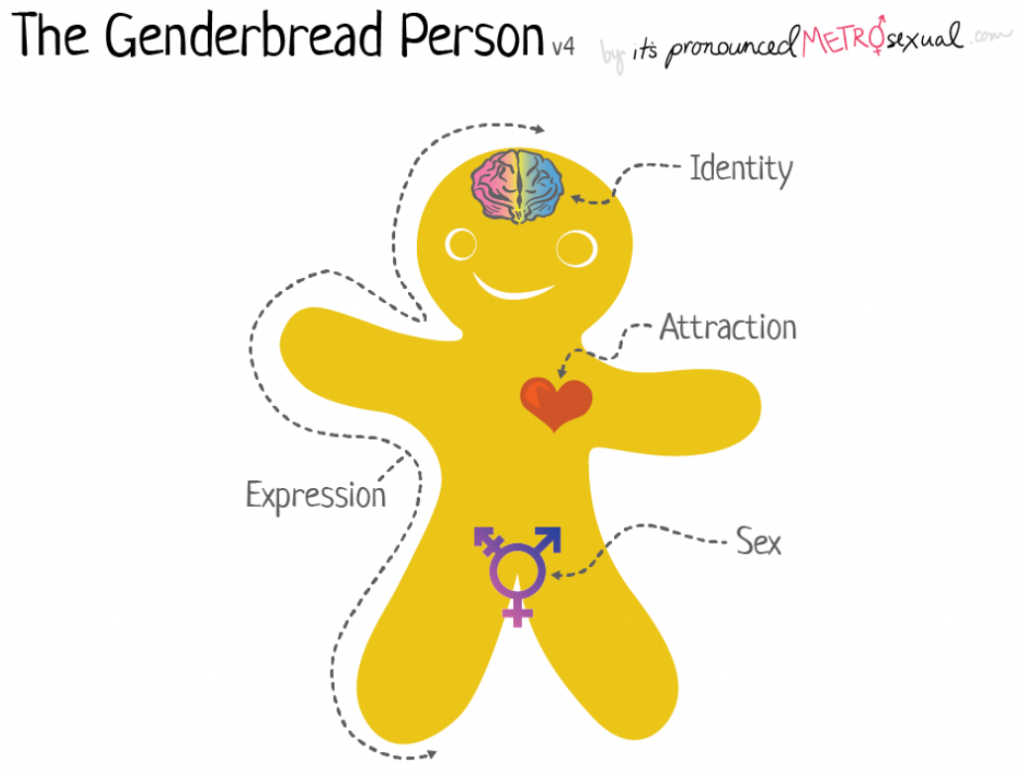A helpful analogy to understand the difference between a person’s biological sex, gender expression, and gender identity is the genderbread person.

First things first, there are four characteristics that our gingerbread friend helps us to understand:
- Anatomical sex, which relates to bodily characteristics
- Gender identity, or the way that they feel their gender
- Romantic/sexual attraction, i.e. the sorts of people that they are attracted to
- Gender expression, referring to how they express their gender through clothing, actions, behaviour, etc.
Just like we do, gingerbread people can come in all sorts of different variations. According to the model, none of these four aspects are either/or, instead they’re a spectrum. Importantly, whilst things like male-ness and man-ness and masculinity may overlap, they don’t have to necessarily.
Anatomical Sex

Anatomical or biological sex describes the sorts of characteristics that we’re born with and which we tend to associate with male-ness or female-ness.
It may surprise you to know that around 1% of all people are born with anatomical characteristics that in some way differ from what we might think of as standard male or female bodies. Yet, despite intersex people accounting for this significant number of individuals, we rarely hear much about it in society – and statistically, only around 10-20% of intersex people receive surgery to ‘normalise’ any anatomical characteristics that may not reflect their gender identity.
For this reason, the genderbread person model thinks of anatomical or biological sex in terms of two spectrums rather than one: a scale of femaleness, and a scale of maleness. You can see on the right hand side of the image above how this corresponds with labels we may be familiar with.
Gender Identity

Similar to anatomical sex, we can describe gender identity in relation to two spectrums, but we generally use the terms woman-ness or man-ness to focus on people (as nouns) rather than sex (as adjectives).
As before, the two spectrums range from an absence of something to a strong sense of something:
- No feelings of woman-ness to lots of woman-ness
- No feelings of man-ness to lots of man-ness
This is important because for some people (including those who identify as men or women), they may feel some elements of both woman-ness/male-ness. When people feel both in equal measure, they may define their identity as non-binary, gender-queer, or other related identities.
Romantic/Sexual Attraction

Like our previous two examples, both romantic and sexual attraction can be described in terms of being attracted to nobody through to being attracted to women and/or men in several possible measures.
Here, the genderbread person model also calls attention to the way that some people may be attracted to, say, men specifically, but for some this attraction may be mascuilnity rather than man-ness.
Gender Expression

To finish this section, gender expession relates to how we perform and interpret gender through codes like behaviour, dress, and so on.

